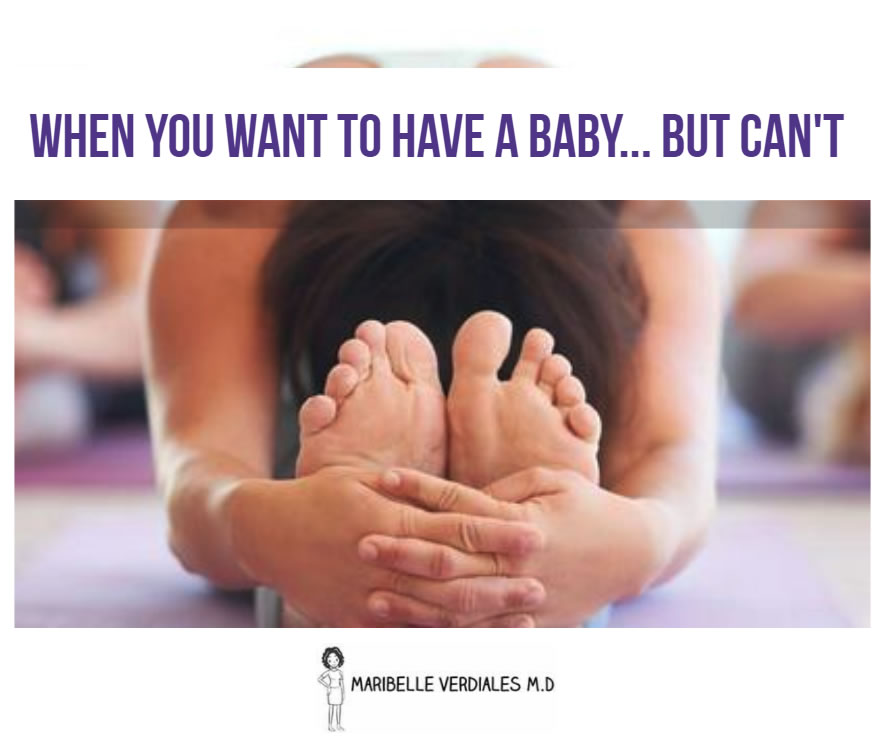An increasing number of couples are living with the devastating effects of infertility. According to the authors of Six Steps to Increased Fertility, 20 percent of couples in the U.S. are estimated to have fertility difficulties—and those numbers may be underreported. Not only is infertility an emotional drain; it’s a financial one. Couples spend billions of dollars in pursuit of pregnancy. In 1999, the newsletter HealthFacts reported that the treatment of infertility is a $2 billion a year industry.
Rather than looking for answers at the infertility clinic or sperm bank, however, couples like Maria and Neil have found their search has ended on the yoga mat. “One day my cousin invited us to a yoga class; she said we could use the relaxation,” says Maria. “We loved it. It gave us a break from the stress and helped us focus on being healthy, not just being pregnant.” Seven months later, Maria was pregnant.
The birth of their child is living proof that yoga is fertile ground for transformation. Ironically, yoga poses were traditionally used to decrease the sexual energy of practitioners, following the belief that one could transform sexual energy to make it more available for self-realization. Today, however, pragmatic couples are using the practices to increase their chances of pregnancy by lowering stress levels, allowing the energy centered in the pelvis to flow freely, and opening up and softening the pelvic organs.
The Agony of Hope
The causes of infertility range from increased exposure to environmental toxins to a drastic drop in sperm counts. Other factors that can influence a woman’s ability to conceive are infection-related scarring in the reproductive tract, hormonal imbalances, thyroid irregularities, poor diet, low body fat, smoking, and excessive drug and alcohol use. Whatever the individual factors, on the whole, infertility is on the rise: The results of a May 2000 study published in Family Planning Perspectives (Vol. 32, Issue 13) reveal that in 1986 approximately 41 clinics in the U.S. offered in vitro fertilization and fertility drugs; by 1996, the number had increased to more than 300.
Beyond the statistics, however, lies the quiet suffering endured by couples trying, unsuccessfully, to start a family. The disappointment, waiting, and what one woman called the “agony of hope” often have devastating effects on a person’s self-perception, mental health, and marriage. “One of the worst things was how it affected our intimate relationship,” says Jayne, a social worker who was trying to get pregnant for four years. “There was a lot of soul-searching: Why was this happening to me? What had I done wrong?”
In addition to blaming themselves, couples are faced with a terrifying feeling of losing control. “We have been in charge of our education, our careers, and our lives, and suddenly we have no control,” says Tom, a 37-year old attorney who had been trying to conceive. “It is humbling, to say the least. We are really looking around for help.”
The Science of Stress
According to Rahul Sachdev, M.D., a specialist in Reproductive Endocrinology and Infertility at the Robert Wood Johnson Medical School in New Brunswick, New Jersey, incorporating the health-enhancing benefits of yoga with traditional and innovative medical intervention can relieve the stress associated with infertility, thus vastly increasing the chances for conception. “Women who are infertile, especially in the long term, are extremely stressed out,” explains Sachdev. “One study has shown that the stress levels of an infertile woman are actually similar to those of someone just told they have HIV.” Dr. Sachdev says he has no doubt that stress can lead to infertility. “What is controversial,” he adds, “is the question of whether or not stress relief creates fertility.”
The answer to that question seems to be a resounding “yes” for couples who took part in a program supervised by Sachdev at St. Peter’s Medical Center in New Brunswick, New Jersey, which was based on the ongoing programs at the Mind-Body Institute at Harvard University created by Herbert Benson, M.D., researcher and author of The Relaxation Response. The program incorporated stress reduction practices like yoga and meditation, emotional support such as group discussions and sharing, and changes in diet, including cutting down on caffeine, alcohol, fats, and sugar.
The results were remarkable: Couples had a 50 percent fertility rate within one year of finishing the program. What made the results even more astounding is that regardless of the cause of the woman’s inability to conceive, whether it was unexplained infertility or low sperm counts, participants were helped in encouragingly high numbers.
Other recent evidence echoes the positive effects of yoga for infertile women. In 2000, Harvard Medical School researcher Alice Domar, Ph.D., published the results of a study in Fertility and Sterility (Vol. 73, No. 4) that showed women who participated in her program, which included relaxation and yoga, were almost three times more likely to get pregnant than women who didn’t. In Domar’s 10-week mind-body workshop, 184 infertile women who had been trying to get pregnant for one to two years were put into a cognitive behavioral group. This group received methods for emotional expression, nutrition and exercise information, and relaxation training—including yoga, meditation, muscle relaxation, and imagery. Interestingly, the group also learned cognitive restructuring, identifying recurrent negative thoughts, such as “I will never have a baby” and changing that thought to “I am doing everything I can to get pregnant.” The results: 55 percent of the women in the group using yoga and other techniques got pregnant within a year, in contrast with 20 percent of the women in the control group who conceived in that same time period.
Stress has physiological effects that will alter the balance of hormones in the body—especially relating to fertility. “Recent research supports the theory that psychological distress can have effects on multiple systems, including inhibition of hypothalamic GnRH, activation of the hypothalamic-pituitary-adrenal axis, and alterations of the immune systems,” concludes Domar’s study. “The impact of these perturbations by psychological stress and depression could then in turn adversely affect ovulation, fertilization, tubal function, or implantation.”
According to Roger Cole, Ph.D., physiologist and yoga teacher, stressful emotions activate the sympathetic nervous system, causing the adrenal glands to release epinephrine into the bloodstream. Many strong emotions like fear and anger, which are actually other names for stress, can cause the body to produce more cortisol and fewer sex hormones. All of these changes are part of the “fight or flight” response, which prepares the body for emergency action but also interferes with its ability to repair itself and digest and assimilate food and increases the chances of infertility.
One of the most powerful effects of epinephrine is that it constricts blood vessels. Dr. Sachdev says this constriction may also occur in the uterus, thus interfering with conception. This coincides with the yogic idea of Apana, the downward moving prana, or energy, which for women is centered in the pelvis. Allowing Apana to flow freely could be the key for reproduction to occur. Yoga poses like Salamba Setu Bandha Sarvangasana (Supported Bridge Pose, done with the sacrum on a bolster and the knees bent) and Viparita Karani (Legs-Up-the-Wall Pose) help to gently stimulate Apana energy, as well as increase micro-circulation in the reproductive tract.
Ellen Saltonstall, a Manhattan-based yoga teacher trained in the Iyengar method and certified in Anusara Yoga, was the yoga teacher for Dr. Sachdev’s program for four years. “I focused on poses which open the pelvis and hip joints,” explains Saltonstall. “I used restorative poses which I felt allowed the Apana to increase. I also gave the students mild inversions to relax them.”
In addition to allowing Apana to move more freely, certain asanas help to soften and “make space” in the pelvis and let go of tension in the abdomen. Women in Salamba Baddha Konasana (Supported Bound Angle Pose) and Savasana (Corpse Pose) should pay special attention to the belly and pelvic region. On the inhalation, they can imagine that the belly is soft and infused with energy; on the exhalation, they can imagine that all impediments to conception are leaving with the breath.
The good news is that improving the general health of the whole person, such as getting proper nutrition, sleeping more, cultivating healthy relationships, and keeping a positive body image will greatly increase the chances of fertility. The better news is that couples who successfully use these tools to bring new life into the world often find a whole new lifestyle emerging—one that not only helps them have a baby but that also helps them become less stressed and more patient parents. “I don’t know if yoga is the reason I got pregnant, but it helped us let go of our tension and frustration so much,” Maria says. “We are really grateful we found it.” Maria has also continued her practice after the birth of her child. “It helps my feelings of stress and of being overwhelmed by being a part-time mom and trying to work part-time at home. I can’t imagine my life without it now.”
Blog post from https://www.yogajournal.com/lifestyle/when-you-want-to-have-a-baby-but-can-t




